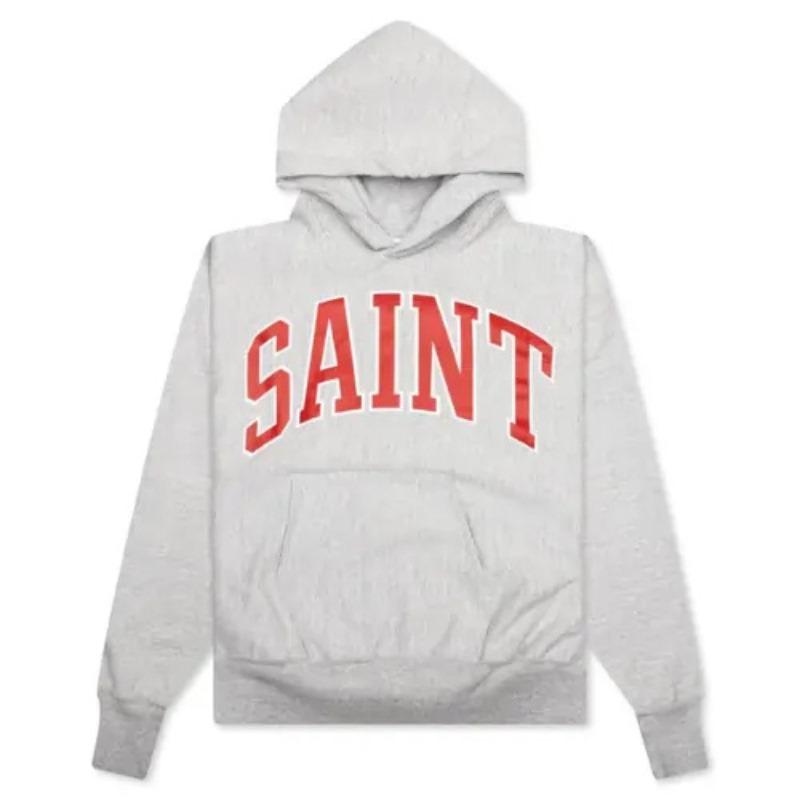In a world where fashion often prioritizes flash over meaning, Saint Michael clothing stands out as a brand that blends spirituality, raw emotion, and rebellious street style into something entirely its own. A collaborative project between Japanese designer READYMADE’s Yuta Hosokawa and Los Angeles-based artist Cali Thornhill DeWitt, Saint Michael Clothing was launched to challenge traditional fashion narratives. It’s not just clothing—it’s commentary, expression, and disruption.
Origins of the Brand
Saint Michael (often stylized as SAINT Mxxxxxx) was born out of a desire to create garments with depth—pieces that feel worn, lived-in, and emotionally charged. Yuta Hosokawa brings his obsession with vintage American military and sportswear through his work with READYMADE, while DeWitt’s artistic direction draws from punk, grunge, and the haunting aesthetics of counterculture. The brand debuted around 2020 and gained immediate traction for its bold graphics, religious symbolism, and heavy distressing. Unlike many streetwear labels focused on hype and quick drops, Saint Michael leans into permanence. Each piece is made to feel like it’s been passed down through generations—tattered, soulful, and meaningful.
Aesthetic and Design Philosophy
The signature style of Saint Michael is unmistakable: oversized silhouettes, washed fabrics, heavy distressing, and religious or emotionally resonant graphics. T-shirts, hoodies, sweatshirts, and denim jackets form the core of their collections, often featuring cracked prints, raw hems, and references to Catholic iconography or classic Americana. The clothing frequently bears imagery of Saint Michael Hoodie, the Archangel—a symbol of protection, justice, and spiritual warfare. But beyond literal religion, the name also nods to inner battles, resilience, and the fight between good and evil—a concept that resonates deeply with a generation struggling with identity, mental health, and social unrest. Each Saint Michael piece tells a story. Phrases like “FEAR OF GOD,” “DEATH,” “ANGELS,” or “LIFE AFTER DEATH” are not used lightly—they're central themes, encouraging reflection and conversation.
Streetwear Meets Art
Cali Thornhill DeWitt’s background in art gives Saint Michael a unique edge. His work often involves mourning culture, memorials, and deep emotional scarring—translated directly into Saint Michael's visual language. For instance, pieces might feature Gothic lettering, airbrush-style portraits of saints, or designs inspired by funeral t-shirts. This collision of art and fashion makes Saint Michael more than just another streetwear brand. It’s wearable art, but not in a high-brow, gallery-only sense—it’s accessible, grungy, and real. It's meant to be worn hard, faded with time, and infused with personal experience.
Cultural Relevance and Following
Saint Michael has become a cult favorite among fashion enthusiasts, artists, and musicians. Celebrities like Kanye West, Travis Scott, and Kendrick Lamar have been seen wearing the brand, reinforcing its position at the intersection of music, fashion, and culture. Unlike more mainstream luxury streetwear brands, Saint Michael maintains an air of exclusivity. The brand doesn’t flood the market with product. Instead, it releases in limited drops, often through select retailers like Union LA, Dover Street Market, or SSENSE. This strategy keeps demand high and the brand's mystique intact.
Craftsmanship and Sustainability
While the brand’s look may be grunge and decayed, the craftsmanship is anything but careless. Each item is made in Japan, known for its attention to detail and fabric quality. The distressing and washing techniques are done meticulously to evoke authenticity—not faux vintage, but something truly aged and respected. There’s also a quiet sustainability in Saint Michael’s ethos. By creating clothing that looks better with age, the brand encourages longevity over trend-chasing. You don’t discard a Saint Michael hoodie—you wear it until the threads unravel, and even then, it might just look better.
Why Saint Michael Matters
Saint Michael clothing is more than a trend—it’s a symbol of resilience, spirituality, and rebellion against the polished, curated perfection often seen in modern fashion. It's gritty, honest, and rooted in human emotion. In an era where identity and meaning are increasingly important, Saint Michael offers a canvas to express vulnerability, strength, and personal belief.

